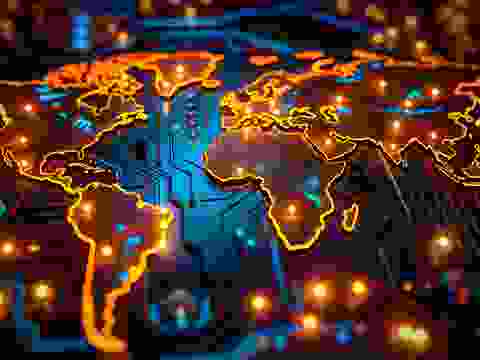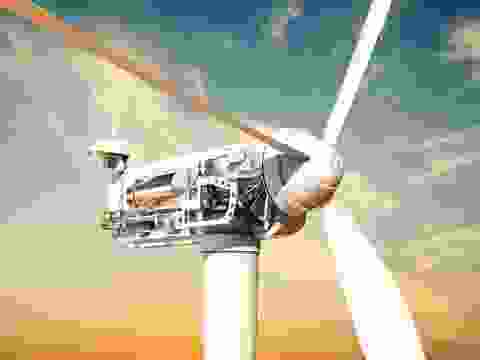Adélie Land
Critical minerals, policy, and the energy transition
The Energy Transition in the French Antarctic Territory
<insert text>
France’s Antarctic Territory and Geopolitical Strategy
France’s Antarctic territory, known as Adélie Land (Terre Adélie), is a central pillar of the country’s polar ambitions and its broader geopolitical posture. Covering 432,000 square kilometres between 136°E and 142°E longitude, this wedge-shaped claim stretches from the Southern Ocean coastline to the South Pole. It is bordered by Australia’s Antarctic Territory on both sides and is governed as one of five districts of the French Southern and Antarctic Lands (Terres australes et antarctiques françaises, TAAF). As one of the seven original claimants under the Antarctic Treaty System (ATS), France maintains both legal standing and scientific presence in Antarctica, yet faces ongoing challenges linked to infrastructure investment, strategic competition, and the evolving dynamics of global polar governance.
France’s Antarctic policy forms part of a broader geopolitical strategy. Through the TAAF, France maintains a maritime presence in the Indian and Southern Oceans, reinforcing its exclusive economic zone (EEZ) claims in the Indo-Pacific. At the EU level, France plays a leading role in shaping Brussels’ polar agenda, promoting sustainability, science, and treaty-based cooperation.
France’s presence in Antarctica dates back to 1840, when explorer Jules Dumont d’Urville claimed the region for France during an expedition that landed on a rocky outcrop, which he named Adélie after his wife. This early act of symbolic sovereignty laid the foundation for France’s sectoral claim, later formalised in 1924 when Adélie Land was placed under Madagascar’s colonial administration.
Key milestones followed:
-
In 1938, France negotiated boundary delimitations with Britain and Australia.
-
In 1950, it established Dumont d’Urville Station, its first permanent Antarctic base.
-
In 1961, France ratified the Antarctic Treaty, freezing territorial disputes while preserving its claim.
Despite these early efforts, France’s commitment has at times been undermined by inconsistent investment. A 2019 parliamentary hearing exposed significant infrastructure decay and funding shortfalls, prompting warnings from scientists and policymakers. Jérôme Chappellaz, then Director of the French Polar Institute, cautioned that, without reinvestment, "our initial claim of sovereignty could be called into question."
As a founding signatory of the Antarctic Treaty and a key participant in polar governance, France exercises notable influence in multilateral forums. It chaired the 5th Antarctic Treaty Consultative Meeting in 1968 and was a founding member of the Commission for the Conservation of Antarctic Marine Living Resources (CCAMLR). France also played a pivotal role in securing the 1991 Madrid Protocol, which banned mineral exploitation on the continent.
France balances cooperation with strategic rivalry. It jointly operates Concordia Station with Italy, conducting high-altitude climate research at Dome C, one of the coldest and most remote inland sites in Antarctica. At the same time, France has opposed Russian seismic surveys near its territorial waters and closely monitors China’s growing Antarctic presence, particularly the expansion of its Inexpressible Island Station, launched in 2023.
France continues to champion environmental protection and climate science in Antarctica. It has been a vocal supporter of the Ross Sea Marine Protected Area, a 1.55 million square kilometre zone established to safeguard krill-dependent ecosystems. French scientists at Concordia and Dumont d’Urville contribute to global climate models through ice core research, revealing atmospheric data stretching back 800,000 years. Wind turbines installed at stations have reduced fossil fuel reliance by 85 percent.
France’s polar science programme includes cryosphere research, such as studies on the Denman Glacier, which is retreating at 5 km/year and poses significant sea-level rise risks, astrophysics experiments, including neutrino detection through the IceCube project and marine biodiversity monitoring, notably krill population studies that inform CCAMLR fishery quotas.
Dumont d’Urville serves as the main coastal research hub, particularly focused on emperor penguin colony monitoring, while Concordia Station, situated inland, is a laboratory for climate and atmospheric studies and is also used by the European Space Agency (ESA) for astronaut winter-over simulations.
Unfortunately, France faces persistent challenges. A 2023 parliamentary review identified an annual shortfall of €49 million, threatening the upkeep of vital Antarctic infrastructure. In addition, non-claimant states, particularly China, are expanding their presence across the continent, raising questions about long-term influence and treaty compliance. Climate change is compounding these pressures, with ice shelf destabilisation placing coastal bases at increasing risk.
In response, the French government launched the 2030 Polar Strategy, announced by President Emmanuel Macron, which includes a €1.1 billion investment in polar science and logistics, construction of the new Michel Rocard Icebreaker, based in New Caledonia, set for deployment in 2027, planned modernisation of Dumont d’Urville Station, with reconstruction beginning in 2026 and expanded satellite surveillance capacity through ESA partnerships.


Source: SFA (Oxford)




Meet the Critical Minerals team
Trusted advice from a dedicated team of experts.

Henk de Hoop
Chief Executive Officer

Beresford Clarke
Managing Director: Technical & Research

Jamie Underwood
Principal Consultant

Ismet Soyocak
ESG & Critical Minerals Lead

Rj Coetzee
Senior Market Analyst: Battery Materials and Technologies

How can we help you?
SFA (Oxford) provides bespoke, independent intelligence on the strategic metal markets, specifically tailored to your needs. To find out more about what we can offer you, please contact us.